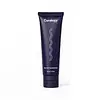What's inside
What's inside
 Key Ingredients
Key Ingredients

 Benefits
Benefits

 Concerns
Concerns

 Ingredients Side-by-side
Ingredients Side-by-side

Water
Skin ConditioningButylene Glycol
HumectantKrameria Triandra Root Extract
Skin ConditioningPPG-15 Stearyl Ether
EmollientCaprylic/Capric Triglyceride
MaskingSteareth-21
CleansingSalicylic Acid
MaskingHydroxypropyl Starch Phosphate
Niacinamide
SmoothingCetyl Alcohol
EmollientMagnesium Ascorbyl Phosphate
AntioxidantSteareth-2
EmulsifyingDimethicone
EmollientDimethyl Isosorbide
SolventCetearyl Alcohol
EmollientAzelamide Mea
Polysorbate 60
EmulsifyingCaprylyl Glycol
EmollientZinc Oxide
Cosmetic ColorantGluconolactone
Skin ConditioningDisodium EDTA
Calcium Gluconate
HumectantPhenoxyethanol
PreservativeSodium Benzoate
MaskingSorbic Acid
PreservativeWater, Butylene Glycol, Krameria Triandra Root Extract, PPG-15 Stearyl Ether, Caprylic/Capric Triglyceride, Steareth-21, Salicylic Acid, Hydroxypropyl Starch Phosphate, Niacinamide, Cetyl Alcohol, Magnesium Ascorbyl Phosphate, Steareth-2, Dimethicone, Dimethyl Isosorbide, Cetearyl Alcohol, Azelamide Mea, Polysorbate 60, Caprylyl Glycol, Zinc Oxide, Gluconolactone, Disodium EDTA, Calcium Gluconate, Phenoxyethanol, Sodium Benzoate, Sorbic Acid
Water
Skin ConditioningCaprylic/Capric Triglyceride
MaskingCetearyl Alcohol
EmollientCetyl Alcohol
EmollientAloe Barbadensis Leaf Juice
Skin ConditioningSqualane
EmollientGlycerin
HumectantDimethicone
EmollientHydroxyethyl Acrylate/Sodium Acryloyldimethyl Taurate Copolymer
Emulsion StabilisingLimnanthes Alba Seed Oil
Skin ConditioningSodium Hyaluronate
HumectantButyrospermum Parkii Butter
Skin ConditioningCetearyl Olivate
Sorbitan Olivate
EmulsifyingArgania Spinosa Kernel Oil
EmollientSodium PCA
HumectantAllantoin
Skin ConditioningIsohexadecane
EmollientCetearyl Glucoside
EmulsifyingPolysorbate 60
EmulsifyingSorbitan Isostearate
EmulsifyingPhenoxyethanol
PreservativeEthylhexylglycerin
Skin ConditioningCitric Acid
BufferingSodium Hydroxide
BufferingWater, Caprylic/Capric Triglyceride, Cetearyl Alcohol, Cetyl Alcohol, Aloe Barbadensis Leaf Juice, Squalane, Glycerin, Dimethicone, Hydroxyethyl Acrylate/Sodium Acryloyldimethyl Taurate Copolymer, Limnanthes Alba Seed Oil, Sodium Hyaluronate, Butyrospermum Parkii Butter, Cetearyl Olivate, Sorbitan Olivate, Argania Spinosa Kernel Oil, Sodium PCA, Allantoin, Isohexadecane, Cetearyl Glucoside, Polysorbate 60, Sorbitan Isostearate, Phenoxyethanol, Ethylhexylglycerin, Citric Acid, Sodium Hydroxide
Ingredients Explained
These ingredients are found in both products.
Ingredients higher up in an ingredient list are typically present in a larger amount.
This ingredient is an emollient, solvent, and texture enhancer. It is considered a skin-softener by helping the skin prevent moisture loss.
It helps thicken a product's formula and makes it easier to spread by dissolving clumping compounds.
Caprylic Triglyceride is made by combining glycerin with coconut oil, forming a clear liquid.
While there is an assumption Caprylic Triglyceride can clog pores due to it being derived from coconut oil, there is no research supporting this.
Learn more about Caprylic/Capric TriglycerideCetearyl alcohol is a mixture of two fatty alcohols: cetyl alcohol and stearyl alcohol. It is mainly used as an emulsifier. Emulsifiers help prevent the separation of oils and products. Due to its composition, it can also be used to thicken a product or help create foam.
Cetearyl alcohol is an emollient. Emollients help soothe and hydrate the skin by trapping moisture.
Studies show Cetearyl alcohol is non-toxic and non-irritating. The FDA allows products labeled "alcohol-free" to have fatty alcohols.
This ingredient is usually derived from plant oils such as palm, vegetable, or coconut oils. There is debate on whether this ingredient will cause acne.
Due to the fatty acid base, this ingredient may not be Malassezia folliculitis safe.
Learn more about Cetearyl AlcoholCetyl Alcohol is a fatty alcohol. Fatty Alcohols are most often used as an emollient or to thicken a product.
Its main roles are:
Though it has "alcohol" in the name, it is not related to denatured alcohol or ethyl alcohol.
The FDA allows products labeled "alcohol-free" to have fatty alcohols.
Learn more about Cetyl AlcoholDimethicone is a type of synthetic silicone created from natural materials such as quartz.
What it does:
Dimethicone comes in different viscosities:
Depending on the viscosity, dimethicone has different properties.
Ingredients lists don't always show which type is used, so we recommend reaching out to the brand if you have questions about the viscosity.
This ingredient is unlikely to cause irritation because it does not get absorbed into skin. However, people with silicone allergies should be careful about using this ingredient.
Note: Dimethicone may contribute to pilling. This is because it is not oil or water soluble, so pilling may occur when layered with products. When mixed with heavy oils in a formula, the outcome is also quite greasy.
Learn more about DimethiconePhenoxyethanol is a preservative that has germicide, antimicrobial, and aromatic properties. Studies show that phenoxyethanol can prevent microbial growth. By itself, it has a scent that is similar to that of a rose.
It's often used in formulations along with Caprylyl Glycol to preserve the shelf life of products.
Polysorbate 60 is used to help stabilize products. It is a surfactant and emulsifier. These properties help keep ingredients together in a product. Surfactants help reduce surface tension between ingredients with different states, such as liquids and solids. Emulsifiers help prevent oils and waters from separating.
Polysorbate 60 is sorbitol-based and created from the ethoxylation of sorbitan. Ethoxylation is a chemical reaction used to add ethylene oxide. Sorbitan is a the dehydrated version of sorbitol, a sugar found in fruits.
In this case, the 60 comes from reacting 60 units of ethylene oxide with sorbitan.
Polysorbates are commonly used in medicine and foods.
Learn more about Polysorbate 60Water. It's the most common cosmetic ingredient of all. You'll usually see it at the top of ingredient lists, meaning that it makes up the largest part of the product.
So why is it so popular? Water most often acts as a solvent - this means that it helps dissolve other ingredients into the formulation.
You'll also recognize water as that liquid we all need to stay alive. If you see this, drink a glass of water. Stay hydrated!
Learn more about Water